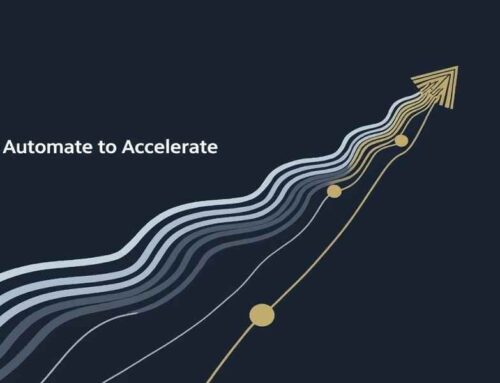
3 Crucial Shifts That Will Skyrocket Your Business Profits
Let’s cut to the chase: If your business isn’t growing, it’s dying. You’ve poured blood, sweat and tears into your venture, but stagnant profits keep you up at night. What’s missing? The answer lies in three crucial shifts, transformative strategies that separate thriving businesses from those stuck in survival mode. These aren’t vague theories; they’re actionable, proven methods to unlock explosive growth. Ready to stop leaving money on the table? Let’s dive in.
The Wake-Up Call: Why Your Current Strategy Isn’t Working
You’re working harder than ever, but your revenue plateau feels like quicksand. Sound familiar? The truth is, traditional approaches, like slashing prices or doubling ad spend, rarely move the needle long-term. As Peter Drucker famously said, “There is nothing so useless as doing efficiently that which should not be done at all.”
The game has changed. Customers demand more value, competition is fiercer and profit margins are tighter. To thrive, you need to rethink how you operate. Let’s explore the three shifts that will future-proof your business and turn profit leaks into profit geysers.
Shift #1: From Transactional Relationships to Lifetime Value Maximization
Ask yourself: Are you treating customers like one-night stands or lifelong partners? If your focus is on closing the next sale, you’re leaving massive profits untapped.
The Problem: Chasing new customers is expensive. Studies show acquiring a new client costs 5-25x more than retaining an existing one. Yet, most businesses still prioritize acquisition over nurturing loyalty.
The Shift: Flip the script. Focus on increasing Customer Lifetime Value (CLV). How?
- Personalize experiences: Use data to tailor offers, recommendations and communication.
- Build community: Engage customers through loyalty programs, exclusive content or VIP groups.
- Solve bigger problems: Upsell complementary products or services that deepen their reliance on you.
Example: Amazon’s “Subscribe & Save” program locks in recurring revenue while simplifying life for buyers. Result? Higher retention, predictable cash flow and 70% of their revenue from repeat customers.
“Your most unhappy customers are your greatest source of learning.” – Bill Gates. Listen to them and you’ll uncover golden opportunities to boost CLV.
Shift #2: From Scattered Efforts to Strategic Leverage
Are you spread too thin? Trying to do everything yourself or worse, chasing every trend, is a recipe for burnout and mediocrity.
The Problem: Many entrepreneurs confuse busyness with progress. You’re juggling social media, product development, customer service and more. But without focus, you’ll never achieve mastery or profitability.
The Shift: Double down on your unfair advantage. Identify the 20% of activities driving 80% of results (hello, Pareto Principle!), then:
- Automate or delegate: Use tools like CRM software or outsource non-core tasks.
- Niche down: Specialize in a high-demand, low-competition area.
- Collaborate: Partner with complementary businesses to expand reach without extra costs.
Example: Slack didn’t try to reinvent email; they dominated team communication. By focusing relentlessly on solving a specific pain point, they grew to a $27 billion valuation.
“Do not wait; the time will never be ‘just right.’ Start where you stand.” – Napoleon Hill. Stop chasing shiny objects. Start leveraging what already works.
Shift #3: From Price-Cutting to Value-Stacking
Raise your hand if you’ve ever competed on price… only to attract bargain hunters who vanish when a cheaper option appears. Race-to-the-bottom pricing erodes profits and devalues your brand.
The Problem: Competing on price is a losing battle. Instead of slashing margins, why not increase perceived value?
The Shift: Bundle products/services into irresistible packages. Here’s how:
- Solve a full problem: Combine your core offering with add-ons (Example, a “Done-For-You” Package).
- Create tiers: Offer Basic, Premium and VIP options to cater to different budgets.
- Highlight outcomes: Market the result (Example, “Save 10 hours/week”) instead of the product.
Example: Apple doesn’t sell phones; they sell an ecosystem (iPhone + AirPods + iCloud). By stacking value, they command premium prices and cult-like loyalty.
“Price is what you pay. Value is what you get.” – Warren Buffett. When customers see undeniable value, price becomes an afterthought.
Putting It All Together
These three crucial shifts aren’t just theories, they’re battle-tested strategies. Let’s recap.
- Maximize lifetime value by turning customers into raving fans.
- Leverage your strengths instead of drowning in busywork.
- Stack value to justify higher prices and build loyalty.
Still wondering where to start? Begin with one shift. Audit your customer retention strategies, automate a time-consuming task or redesign a service package. Small steps compound into big results.
Your Next Move
The difference between stagnation and growth isn’t luck, it’s strategy. As Sun Tzu wrote, “Strategy without tactics is the slowest route to victory. Tactics without strategy are the noise before defeat.”
Your competitors aren’t waiting. Will you keep doing what’s comfortable or will you embrace these crucial shifts to dominate your market?
CTA
Ready to skyrocket your business profits? Pick one shift from this article and implement it this week. Share your commitment in the comments, we’re rooting for you!
By focusing on lifetime value, strategic leverage and value-stacking, you’ll not only survive but thrive. Remember, profit isn’t an accident, it’s a choice. Make yours today.
FAQs: 3 Crucial Shifts That Will Skyrocket Your Business Profits
1. Q: How do I start implementing these crucial shifts if I’m a small business with limited resources?
A: Begin with one shift that aligns with your biggest pain point. For example, if customer retention is weak, launch a simple loyalty program (“Buy 3, Get 1 Free”) or send personalized thank-you emails. Tools like Mailchimp or Canva offer free tiers to automate outreach. Progress over perfection, small, consistent actions compound.
2. Q: How long will it take to see results from these shifts?A: It depends on your industry and execution, but most businesses notice traction within 3-6 months. For example, improving CLV through personalized follow-ups can boost repeat sales in as little as 30 days. Track metrics like retention rate or average order value weekly to gauge progress.
3. Q: What if my customers are highly price-sensitive? Can value-stacking still work?
A: Absolutely. Value-stacking isn’t about raising prices, it’s about enhancing perceived worth. Bundle freebies (Example, 10% Discount Code: WELCOME10) or emphasize outcomes (“This package saves you 5 hours/month”). Even budget-conscious buyers pay more when they see tangible benefits.
4. Q: How do I identify my business’s “Unfair Advantage” for strategic leverage?
A: Ask: What do we do uniquely well that competitors can’t easily replicate? It could be your niche expertise, proprietary process or loyal community. Survey customers: “Why did you choose us?” Their answers often reveal your hidden superpower.
5. Q: Can these shifts work for service-based businesses (Examples, Consultants, Agencies)?
A: Yes! For example:
- Lifetime value: Offer retainer packages instead of one-off projects.
- Strategic leverage: Automate client onboarding with tools like Calendly or Dubsado.
- Value-stacking: Bundle coaching sessions with templates or group masterminds.
6. Q: How do I measure Customer Lifetime Value (CLV) without complex analytics?
A: Use this simple formula:
CLV = Average Purchase Value × Number of Repeat Sales × Average Retention Time.
Example: Customers typically spend $500 on each order, places 4 orders per year and stays subscribed for 2 years.
CLV = $500 × 4 × 2
CLV = $4000
Track this monthly to spot trends.
7. Q: What if my team resists these changes?
A: Involve them early. Share data (Example, “Retaining 5% More Customers = $X in Revenue”) and start with low-risk experiments. Celebrate quick wins to build momentum. As Simon Sinek says, “People don’t buy what you do; they buy why you do it.” Align shifts with your team’s “Why.”
8. Q: Which shift should I prioritize first?
A: Start with the one that addresses your biggest leak:
- Low repeat sales? Focus on CLV.
- Overwhelmed by tasks? Automate/delegate.
- Constant price wars? Stack value.
9. Q: Are there industries where these shifts won’t work?
A: These principles apply universally. Even regulated fields like healthcare or finance can bundle services (“Financial Planning + Tax Optimization”) or leverage niche expertise (“Certified Retirement Advisors for Teachers”). Adapt the tactics, not the strategy.
10. Q: What tools do you recommend for automating tasks?
A: Start with:
- CRM: HubSpot (free tier) or Zoho.
- Project Management: Trello or Asana.
- Social Media: Buffer or Later.
- Email Marketing: Klaviyo (e-commerce) or ConvertKit.
11. Q: How do I create bundled packages without overwhelming customers?
A: Use tiered options:
- Basic: Core offering.
- Premium: Core + 1-2 high-value extras.
- VIP: All-inclusive + priority support.
Test bundles with a small group first and refine based on feedback.
12. Q: What if I don’t have a budget for loyalty programs?
A: “Loyalty” doesn’t require discounts. Surprise customers with handwritten notes, early access to new products or free consultations. As Maya Angelou said, “People will forget what you said, but they’ll never forget how you made them feel.”














